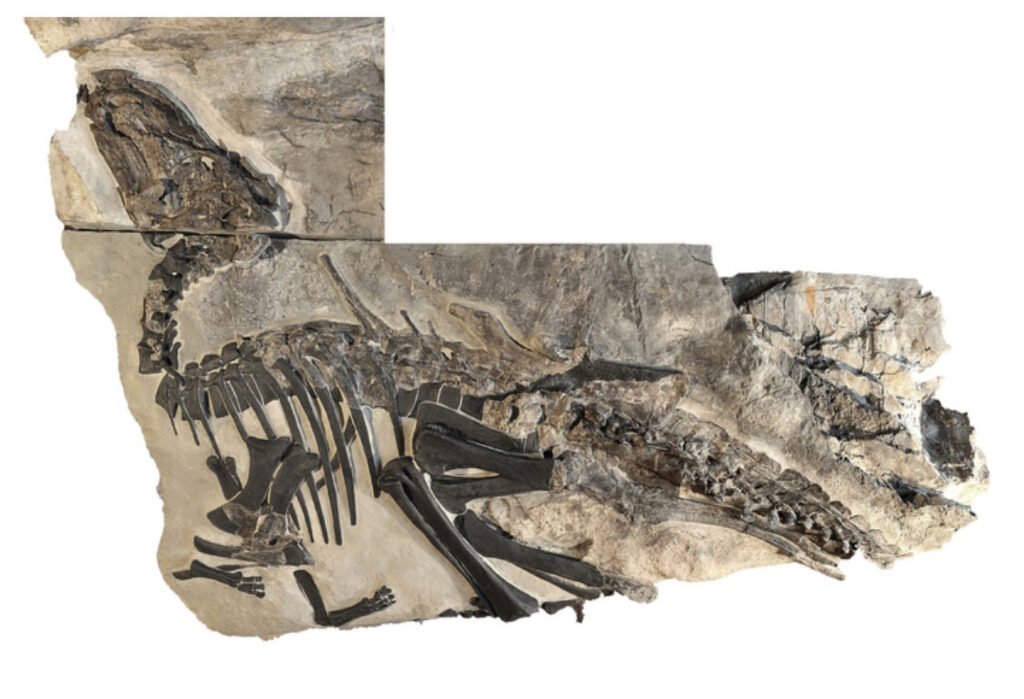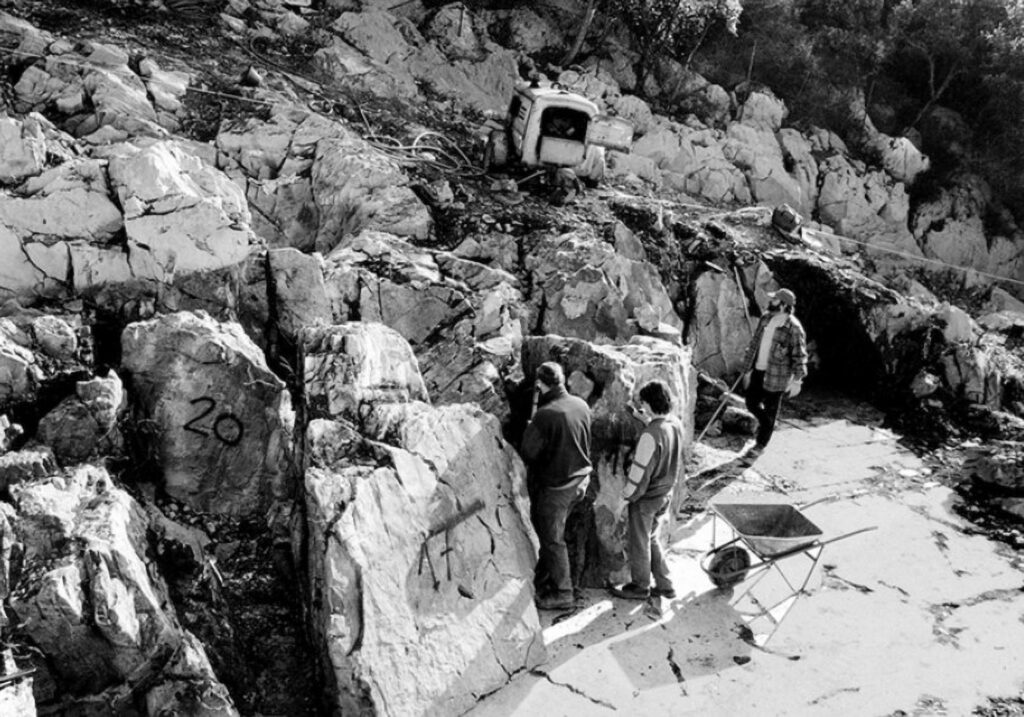An international team of archaeologists has discovered seven dinosaur fossils near the Italian port city of Trieste with some of them dating back 80 million years potentially rewriting the current understanding of prehistory in the area.
The new study has been published in the academic journal Scientific Reports and it was coordinated by researchers from the University of Bologna.

(A. Giamborino, Soprintendenza Archeologia, belle arti, Friuli-Venezia Giulia/Newsflash)
It reveals “the first palaeontological site with multiple, exceptionally complete dinosaur skeletons from Italy: the Villaggio del Pescatore site, located in the Duino-Aurisina municipality, near Trieste, in north-eastern Italy”, according to a statement released by the University of Bologna and obtained by Newsflash.
The study also “reviews and rewrites many of the existing evolutionary hypotheses that interpret the ancient Mediterranean” and its species.
The seven, remarkably complete dinosaur skeletons belong to the Tethyshadros insularis species. They are the most complete skeletons of dinosaurs ever found in Italy.
One skeleton in particular, dubbed “Bruno”, is said to be in pristine condition.

(P. Ferrieri, Soprintendenza Archeologia, belle arti, Friuli-Venezia Giulia/Newsflash)
The experts said that dinosaurs are not the only fossil remains present at the site. There are also fish, crocodiles, flying reptiles and even small crustaceans that “provide a vivid picture of an ancient ecosystem that has no equal worldwide.”
The unique fossils from the Villaggio del Pescatore site can be viewed in Trieste at the Museo Civico di Storia Naturale.
In the statement, the university said: “Originally, geologists interpreted the area that today is the Villaggio del Pescatore site as part of an island in the middle of a ‘proto-Mediterranean’ ocean called Tethys.
“This supported the incorrect interpretation that the relatively small, first dinosaur skeleton found at the site (nicknamed ‘Antonio’), was actually a ‘dwarf’ species, an example of the so-called ‘island rule’ (the evolutionary miniaturisation of bigger animals in an insular environment due to the scarcity of resources).”

(University of Bologna/Newsflash)
But it added that “in this new study, the research team documents that ‘Antonio’ is an immature individual, whereas ‘Bruno’, which is bigger in size, represents an older individual – and that could have been still growing at the time of its death.”
The experts said that new geological data gathered at the site showed the fossils to be about 80 million years old, from the Cretaceous period, which is 10 million years older than previously thought.
They said that back then, north-eastern Italy faced a vast ocean that was connected to Western Europe and Asia and is characterised by numerous potential migratory routes for large terrestrial animals that crossed what is now called Italy.
The experts said that “this new research highlights not just a first in terms of exceptional findings, but most importantly the pivotal role of the Italian dinosaur fossil record for evaluating important scientific hypotheses on these ancient animals.”

The bones of ‘Antonio’ under the microscope, showing the bone cells.
(University of Bologna/Newsflash)
Palaeontological site of Villaggio del Pescatore with people from ZOIC, while working to extract the fossils.
(ZOIC s.r.l./Newsflash)
To find out more about the author, editor or agency that supplied this story – please click below.
Story By: Joseph Golder, Sub-Editor: James King, Agency: Newsflash
The Ananova page is created by and dedicated to professional, independent freelance journalists. It is a place for us to showcase our work. When our news is sold to our media partners, we will include the link here.




